Return of the Tomb
The restoration of Humayun’s Tomb, considered the first significant iteration of what is today understood to be Mughal architecture, is a dialogue with the past as much as it is a silent revelation of our future
Rosalyn D’Mello
It was the Persians who first conceived of Paradise. What they called ‘paradaida’ was imagined as a walled enclosure, an earthly representation of a heavenly place. The Greeks borrowed the concept, which gradually seeped into Judeo-Christian philosophy. Iran was not only speckled with such paradises but the aesthetic construction of the walled garden became an integral constituent of its empire building mission. Bruce Lincoln, a scholar on the history of religions, went so far as to posit that the Achaemenid Persians intended to conquer the entire known world as a part of their larger enterprise – establishing paradise on earth. It seems only natural then that when the Persian architect Mīrak Mīrzā Ghiyās was commissioned in 1565 by Hamida Banu Begum, the widow of Humayun, the second Mughal emperor of India, to build his mausoleum in the sacred vicinity of the dargah and shrine of the Sufi saint, Chishti Shaikh Nizamuddin Auliya, he should replicate the idea of the paradaida, giving the Indian subcontinent its first example of an elaborate garden tomb.
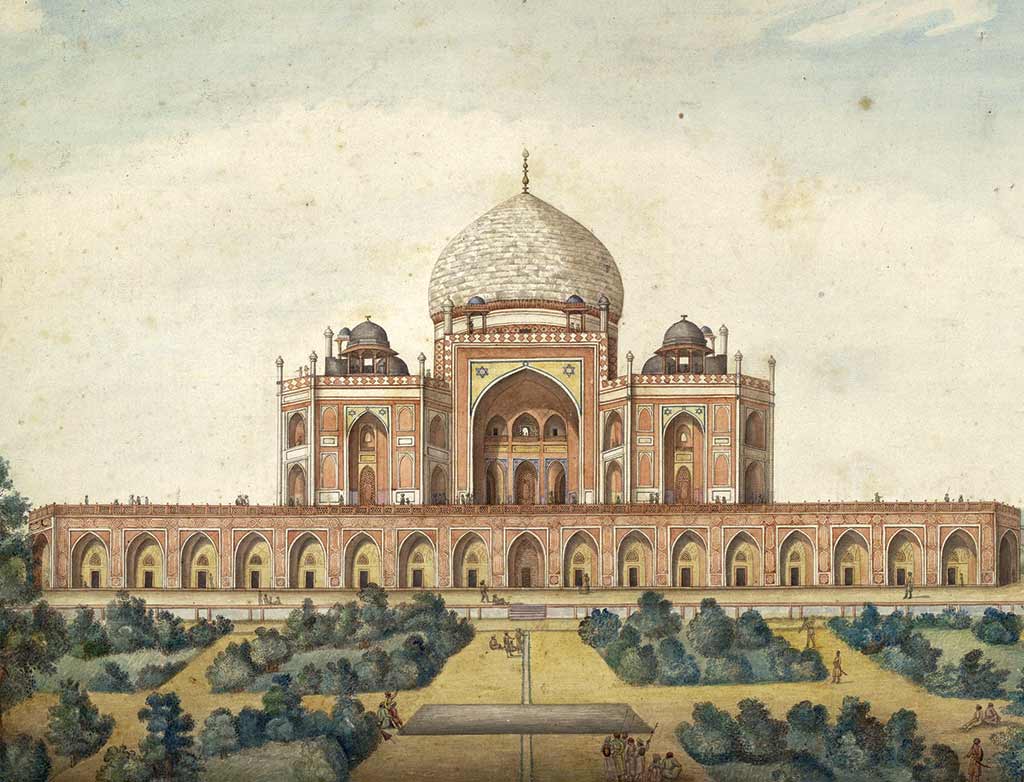
Ghiyās conceptualised the garden area adjoining Isa Khan and Bu Halima’s tombs in the Persian-style Charbagh, which in Farsi translates as four gardens. Humayun’s Tomb would lie at the intersection between the four causeways created to emulate the Quranic description of Eden, with its four rivers symbolically represented through flowing water channels that in turn divide the quadrants into 36 smaller sections. The two-storied central sarcophagus was oriented on the north-south axis, in keeping with Islamic tradition, and was set to have been designed by Hamida Banu Begum herself to stand on a massive red sandstone platform built on a height of up to seven metres. Planned as an irregular octagon, the tomb would have a 47-metre-high marble-clad double dome with decorative pillared kiosks called chhatris, reflective of a more Hindu architectural influence. The interior was to be decked with yellow and black marble with arched windows laced with jaalis to diffuse the sunlight. The emperor’s remains were shifted from their temporary abode at Purana Qila to the basement floor around 1570, when the construction was deemed complete at a total cost of Rs. 1.5 million. Visitors paying homage were meant to arrive at the cenotaph, located in the centre of the upper tier leading to the corner chambers that would come to house the graves of at least 150 other members of the royal family.
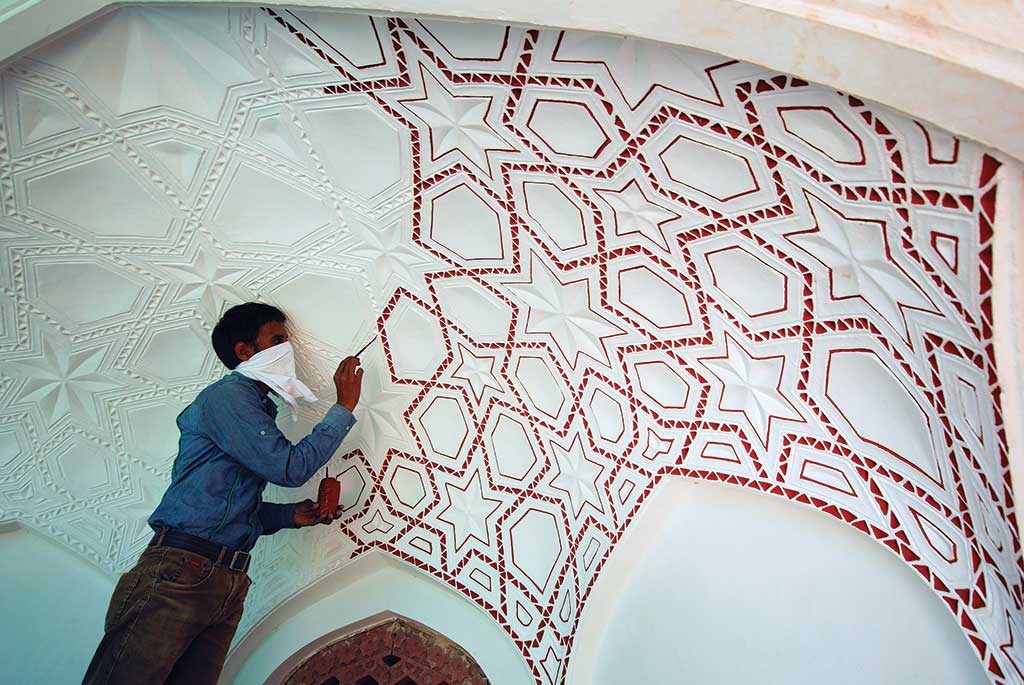
Built in the reign of Akbar the great, Humayun’s heir, the garden tomb became the first significant iteration of what is today understood to be Mughal architecture, its grandiloquence and ostentation strategically undercut by the seeming weightlessness of its double dome and a minimalist restraint in ornamentation. It would become the prototype for the Taj Mahal, Shah Jahan’s ode to his deceased wife, Mumtaz. Several centuries later, the Humayun Tomb complex witnessed the end of the Mughal Empire when Bahadur Shah Zafar, who had sought refuge here, was arrested by the British and exiled to Burma, effectively ending the Indian Revolt of 1857.
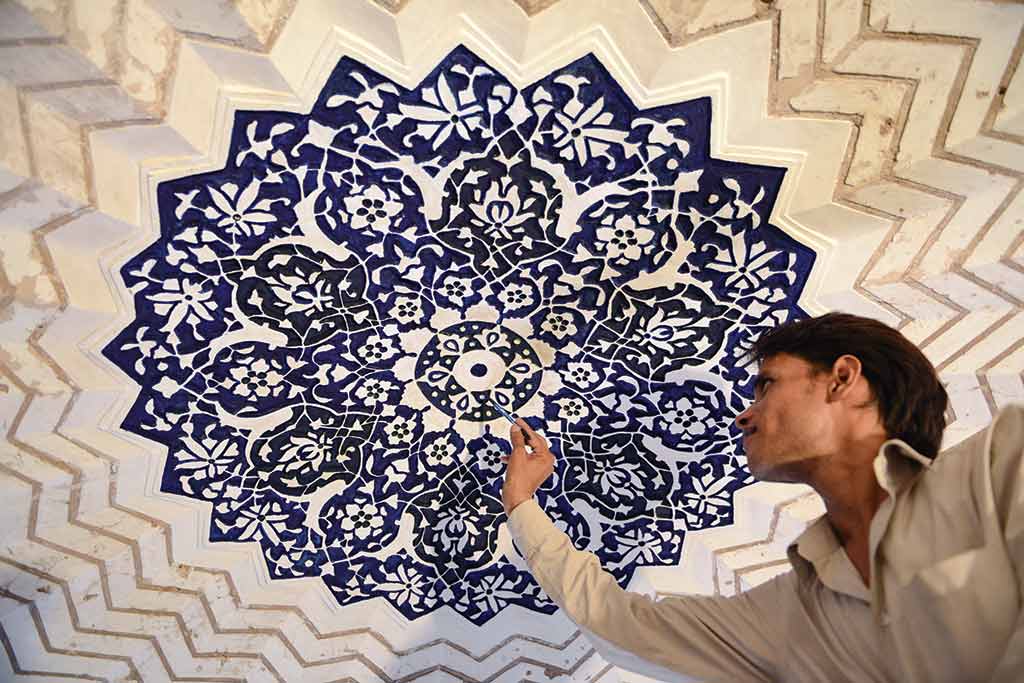
Paradise was lost. Although the tomb endured as an architectural legacy, it underwent several restorative attempts under the British-established Archaeological Survey of India (ASI). During and for a few years after the traumatic partition that led to the creation of Pakistan it served as a refugee camp for about three thousand displaced Muslims, and some of them used the sandalwood doors in the arched recesses of the tomb for firewood. Although the ASI painstakingly recorded the extent of the damage done, by then there was already a lack of skilled craftsmanship capable of restoring its past eloquence. ‘Take proper care of your monuments, and you will not need to restore them,’ the poet and aesthete John Ruskin had written in the 19th century. ‘Watch an old building with an anxious care; guard it as best you may, and at any cost, from every influence of dilapidation,’ he had warned. Had his dictum been followed, Humayun’s tomb, one of the most splendid examples of Persian-influenced Mughal architecture, would have survived more or less intact. However, a change in the ASI’s policy back in the 1860s contributed to the monument’s decline. Until then it was craftsmen who were not only responsible for building such grand structures but who were entrusted with their upkeep, conservation architect Ratish Nanda explained over an interview. ‘That culture was abandoned with just a single stroke of the pen, so to speak, and engineers and archaeologists came to be in charge of these buildings, and they are not really trained to take care of architectural heritage.’
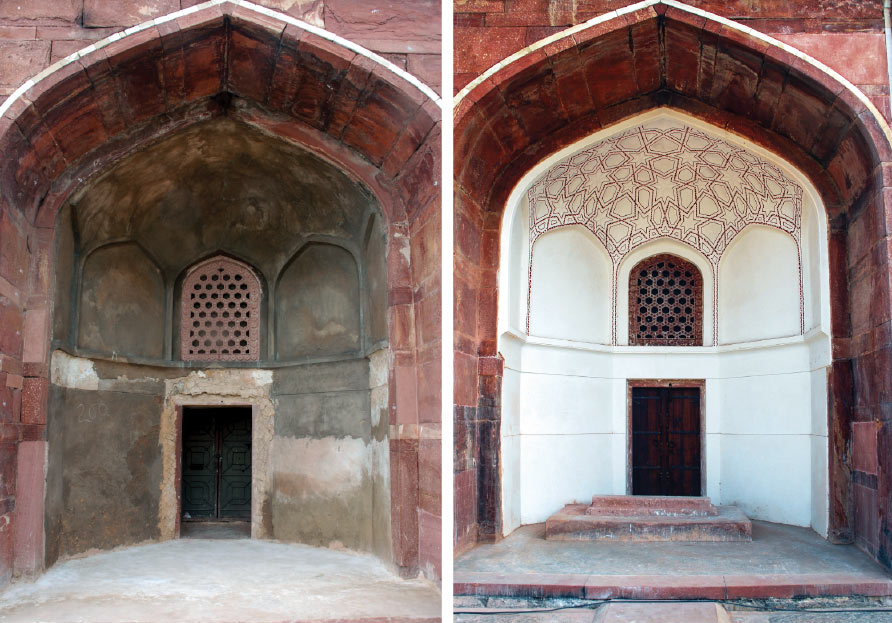
In 1993, Humayun’s Tomb was inscribed as a World Heritage Monument by a UNESCO committee, which prescribed the maintenance of the gardens as a significant priority. Four years later, the His Highness the Aga Khan, on the occasion of the golden jubilee of India’s Independence, gifted the nation the promise to restore the gardens, which under the British had been structurally tampered with. As director of the Aga Khan Trust for Culture (AKTC), Nanda oversaw its conservation, which was transparently completed in 2004. Pleased with the unprecedented success of this public-private partnership, the then Prime Minister, Dr. Manmohan Singh, made a request for more such initiatives to ‘maintain and restore our nation’s heritage’. In obeisance, the AKTC, with funding from the Sir Dorabji Tata Trust, returned to the site in 2007 with a mission to conserve Humayun’s Tomb by positing it as a catalyst that could help rejuvenate the 700-year-old Nizamuddin Basti neighbourhood by improving the quality of life of its residents while also restoring a series of surrounding Mughal-era monuments in the form of the Nizamuddin Urban Renewal Initiative.
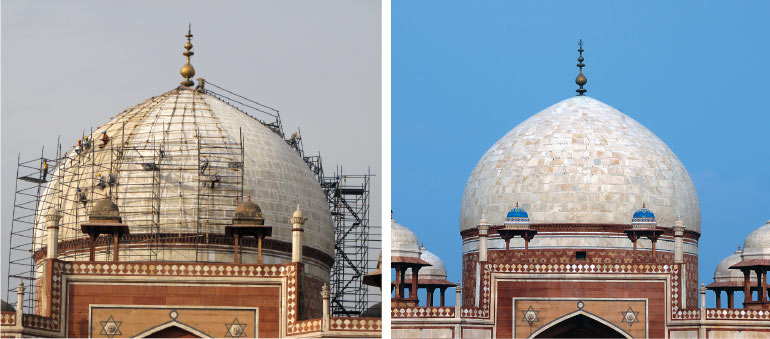
‘We inherited a building that was a mess,’ Nanda confessed, when asked what constituted his biggest challenge. The two-storied mausoleum was in a state of accelerated deterioration, as the use of 3D laser scanning revealed, because of the misguided use of improper material across several restorative attempts. The tiles on the chhatris and domes had long since been missing. The interiors, which were originally profusely tiled, had been plastered over. A million kilos of concrete on the roof and at least 2,00,000 square feet of cement on the walls were contributing to its tragic state of asphyxiation, damaging the red sandstone. The impressive copper filial atop the dome stood too precariously. ‘We are not saying it was going to collapse,’ said Nanda. ‘It was still standing, and would stand in perpetuity, because it is a beautifully built building. But after a lot of discussion at the very international level, we realised the only way to really fix it was to go back to the basic principles of the building and by involving the master craftsmen as part of the decision-making process.’

Where a particular craft, like tile making, had completely disappeared as a tradition in India, Nanda and his team traced its antecedents in Uzbekistan but did not import material from there, choosing instead to invite Uzbeki craftsmen to Delhi to impart their knowledge to the Nizamuddin youth, thus potentially reviving a bygone art form. The AKTC decided at the very outset not to look at the site in isolation, leading them to deeply engage with the residents of the neighbourhood in order to address their most pressing issues; sanitation, health and unemployment, seeking alternative ways of combining conservation with refining their standard of living by building toilets, community parks, schools and vocational centers, even training some of them to serve as guides to tourists at Humayun’s tomb, where, post-restoration, the visitor number jumped from 2,00,000 to two million a year.
While the times we live in leave no room for the imagining of paradise, helmed by Nanda, the ongoing Nizammudin renewal project at least allows us, the residents of the present, to envision the aesthetic preoccupations of the past and to understand heritage as not a burden but an asset, one that can re-energise livelihoods and revitalise lost traditions.
____________________________________________________________________________________________________
All Images are Courtesy of the Aga Khan Trust for Culture.
Share